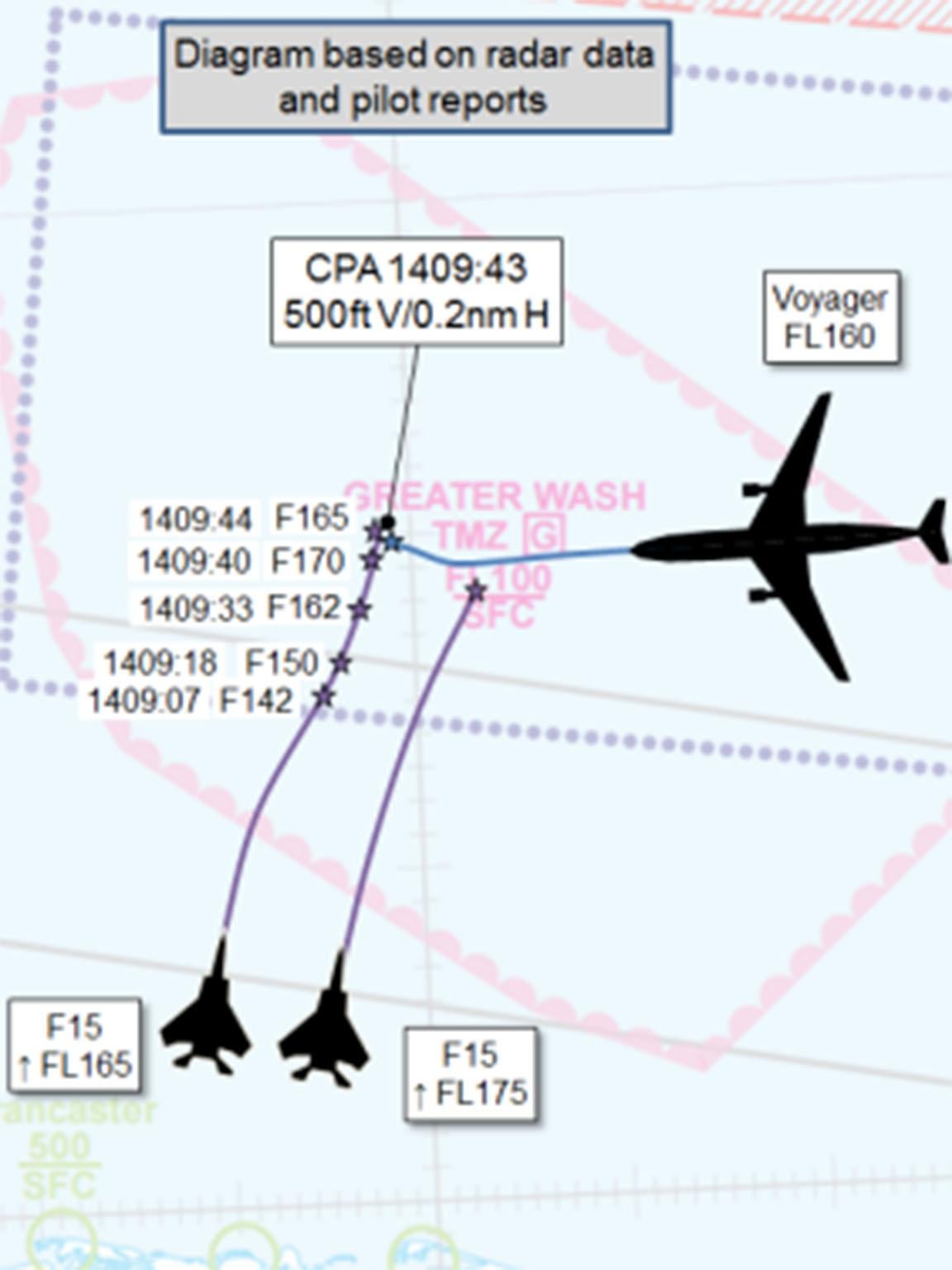RAF tanker plane and US fighter jets in near-miss over North Sea, reveals report
‘We were very close to not being there anymore,’ RAF tanker pilot says

Your support helps us to tell the story
From reproductive rights to climate change to Big Tech, The Independent is on the ground when the story is developing. Whether it's investigating the financials of Elon Musk's pro-Trump PAC or producing our latest documentary, 'The A Word', which shines a light on the American women fighting for reproductive rights, we know how important it is to parse out the facts from the messaging.
At such a critical moment in US history, we need reporters on the ground. Your donation allows us to keep sending journalists to speak to both sides of the story.
The Independent is trusted by Americans across the entire political spectrum. And unlike many other quality news outlets, we choose not to lock Americans out of our reporting and analysis with paywalls. We believe quality journalism should be available to everyone, paid for by those who can afford it.
Your support makes all the difference.A Royal Air Force (RAF) tanker aircraft and two United States F-15 fighter jets nearly crashed over the North Sea after a flight controller was distracted by a phone call, a report has revealed.
The Airprox report says the pilots of the RAF Voyager claimed one of the US Air Force jets came within 160 feet (50 metres) of the aircraft when it flew directly across their path.
The tanker crew, which was flying at 322mph, said they could feel the turbulence as the US jet, flying at 402mph, switched on its afterburner and rocketed away to avoid a crash.
“We were very close to not being there anymore,” an RAF tanker pilot told investigators.
The UK Airprox Board investigates incidences in which aircraft safety may have been compromised.
The tanker pilot reported the near-miss to flight controllers immediately after it happened on 5 January this year, around ten miles off the coast of north Norfolk.

Investigators concluded the F-15s had been flown “into conflict” with the Voyager.
It also laid blame on air traffic controllers for failing to provide adequate “traffic information” and misunderstanding the flight plan of the American pilots.
A controller based at Swanwick, Hampshire was reportedly confused when the F-15s said they planned to fly in the Wash area for refuelling and assumed the pilots meant the geographic Wash. However, the F-15 crews meant they were flying into a “Was Aerial Tactics Area” further north – the same refuelling zone that the RAF tanker was headed towards for refuelling.
Assuming everything was under control – and that the F-15s would be flying south – the flight controller then answered a landline phone which was not his responsibility and became “embroiled in a distracting and complicated” conversation, which the report says “served to further increase his workload and resulted in him focusing on that task rather than on the F-15s”.
A trainee air traffic controller also monitoring the airspace said the incident “escalated very rapidly”, with the F-15s suddenly turning towards the Voyager.
She told investigators there was little time for the tanker to take action to avoid a collision.
In addition to feeling turbulence as the fighter jets roared away, the Voyager crew said they also saw the engines of the F-15s in reheat and could hear the “distinctive roar” of afterburners providing a boost in thrust, which is usually performed during takeoff or in combat situations.
The Voyager pilot “opined that it should not be underestimated how close this incident was to being what could have been a catastrophic mid-air collision”, the report says.
After the incident, the crew decided to curtail the flight and “recover back to base”, reporting a “high” risk of collision.
Members of the UK Airprox Board said they were “disappointed” that the US pilots had not been made aware in a pre-flight briefing that refuelling would be taking place in the area that they planned to fly in, though they also decided that the information they conveyed to the Swanwick controller was not “sufficient”.
RAF investigators made 15 recommendations to prevent a similar situation from happening again, including a review of airspace names “to prevent confusion in the future” after the communication troubles between the US fighter jet pilots and Swanwick controller.
They also recommended that Swanwick review their console management with respect to telephone call management.
Join our commenting forum
Join thought-provoking conversations, follow other Independent readers and see their replies
Comments